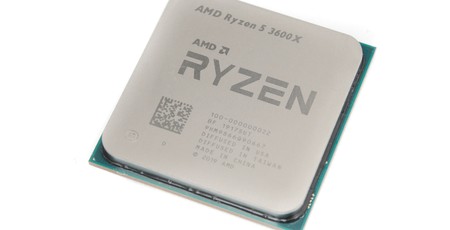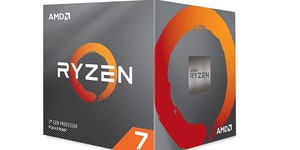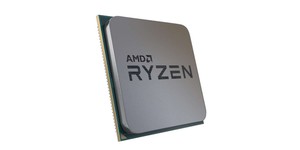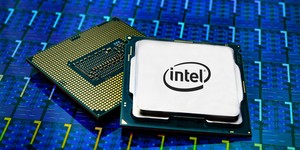
Overclocking
While 3rd Gen Ryzen is leaps and bounds above its predecessor in most instances and single-core boost speeds are higher, things are a tad disappointing when using an all-core overclock. In fact, we managed only 50MHz more than the Ryzen 5 2600X, with our all-core overclock here sitting at 4.25GHz, even with the vcore pushed up to 1.425V. With an out-of-box, single-core boost of up to 4.4GHz and an all-core boost of around 4.1GHz, that means that unless you're gunning for maximum multi-threaded performance, then you'll be much better off trying out Precision Boost Overdrive else you'll be losing ~150MHz of single-core boost.
Performance Analysis
While the overclocking was a disappointment from a lightly-threaded perspective, the overall performance was not. There were massive gains across the board compared to the Ryzen 5 2600X, with the new CPU completing our Adobe Premiere Pro benchmark seven percent quicker and our overclock shaving another seven percent off that time still. Both stock and OC scores in this test massively outgun the Core i5-9600K, and the Ryzen 5 3600X even gives the Ryzen 7 1800X a run for its money despite having two fewer cores.
The Ryzen 5 3600X actually beat the first-gen flagship CPU in both PCMark 10 and HandBrake with the fastest results we've seen from a six-core CPU; the Core i5-9600K was languishing at the bottom of the graphs being around 33 percent and 40 percent slower respectively. Overclocking reduced this difference to 19 percent in HandBrake, but that's still substantial. Our test video file is itself only 2.5 minutes long, so a difference of 19s in completion time could easily scale quite dramatically when using longer footage.

The single-thread score in Cinebench reveals an excellent improvement in IPC, with the Ryzen 5 3600X sitting at 501 compared to just 425 for the new CPU. The overclocked results, however, illustrate what we mentioned above: Since the all-core overclock is lower than the stock single-core boost speed, the overclocked result was slightly slower than stock, and the Core i5-9600K overtook it as well. The multi-threaded test saw another massive improvement, though, with the score rising from 3,053 to 3,705 from Zen+ to Zen 2. The Core i5-9600K was already much slower than the Ryzen 5 2600X; the difference now is laughable, and the Core i5-9600K's superior overclocking does little to save it.
We also ran the numbers on the £200 Core i5-9500 mainly because of its proximity in price. With results in the content creation and rendering tests that are typically just behind a stock-speed Core i5-9600K, it's safe to say that it's well and truly beaten, especially as it is not unlocked and thus cannot be overclocked to make up some ground. This analysis also applies to the Core i5-9500F, the iGPU-free version of the same CPU that retails for £190.
Games were the only saving grace for Intel, but even here things are no longer easy. At stock speed, the AMD CPU was on par with the Core i5-9600K and Core i5-9500 in Far Cry 5 thanks to a whopping 25fps upshift on average compared to the Ryzen 5 2600X, despite the new CPU drawing much less power under full load too - that's actually worth upgrading your CPU for. Overclocking, however, allows the Core i5-9600K to edge out a lead to a 99th percentile of 99fps compared to 91fps (and average 133fps versus 117fps), demonstrating a CPU frequency-limited scenario. With lower frame rates and higher resolutions, that difference will be smaller or even non-existent, but this is still a win for Intel.
Dota 2 has Intel out front too, with a 7fps 99th percentile advantage at stock (12fps on average) extending to a 13fps lead (23fps on average) once overclocked. That said, both CPUs average well over 144fps here anyway, so unless you're playing on a >144Hz screen, the experience will be largely the same. It's also worth pointing out that the added frequency available with the Ryzen 9 3900X allowed it to also reach the same heights as an overclocked Core i7-9600K - this is another test that scales well with frequency.
The power consumption figures are a tag high at idle but impressively low when under load. Intel can add all the '+' symbols it likes, but AMD's 7nm process is evidently more power efficient than Intel's latest 14nm efforts.
Conclusion
While in some situations it's the same old argument - Intel is quicker in games - that argument no longer holds as much weight as it once did thanks to the gains AMD has made. At stock speed, even with a fairly powerful GPU and at 1080p (putting a lot of emphasis on the CPU), these differences are either nearly non-existent (as we saw in Far Cry 5), or at least much smaller and less impactful than before (Dota 2). Only when you factor in overclocking does the Core i5-9600K show its strength and frequency advantage, but again the difference is now less meaningful.
The main point, of course, is that as soon as you switch to the likes of Premiere Pro, HandBrake, or Cinebench, the AMD CPU is able to offer such significant gains over the identically-priced Core i5-9600K that the latter is only worth it if you plan to massively overclock it and only use it for a gaming system specifically geared toward ultra high frame rates. If you're a proper esports fanatic, that's viable, but for a multi-purpose or reasonably-priced content creation rig, though, it's the Ryzen 5 3600X, with absolutely no contest, except perhaps from AMD's own lineup - you'll just have to wait a little longer for the Ryzen 5 3600 review to see how that stacks up.


MSI MPG Velox 100R Chassis Review
October 14 2021 | 15:04








Want to comment? Please log in.